Understanding the Various Types of Digital Advertising
 10 Different Types of Digital Advertising
10 Different Types of Digital Advertising
- Display Ads
- Paid Search Advertising
- Video Ads
- Email Advertising
- Social Media Advertising
- Native Advertising
- Audio Advertising
- Mobile Advertising
- Retargeting Advertising
- Influencer Advertising
#1 Display Ads
Display ads are digital advertisements that use captivating designs, such as images or text, to promote a product or service. You can find them on websites, social networks, and other online platforms.
Characteristics
- Eye-catching visuals: Effective visual ads incorporate graphics and images to grab attention and generate interest.
- Clear messaging: A visual ad should deliver its message concisely and unmistakably.
- Call to action: Ads should include a compelling call to action (CTA) that motivates users to take action (e.g., "Shop Now" or "Learn More").
Benefits
- Extensive Reach: Visual ads can reach a large audience as they can be displayed across numerous websites and platforms.
- Targeted advertising: Visual ads can target specific audience segments based on demographics, interests, or other factors.
- Cost-effectiveness: Visual ads offer marketers an affordable way to reach a broader audience, even with limited budgets.
Tips
- Use high-quality images: It's essential to have sharp visuals that catch people's attention and leave a positive impression of your brand.
- Please keep it simple: A clean, uncluttered design makes your advertisement more memorable and easier to understand.
- Experiment with ad formats: Try ads like static images, animations, or videos to see which works best for your campaign.
- Optimize for mobile devices: Make sure your ads are well-designed and responsive on smartphones since many users browse the internet using their phones.
- A/B Test Your Ads: Compare variations of your ads, such as different call-to-action, images, or messages. This will help you to determine which version performs better to optimize your campaign.
Example

#2 Paid Search Advertising
Paid search advertising is another type of digital advertising. It allows brands to display ads on search engine results pages (SERPs), targeting users actively searching for keywords.
Characteristics
- Targeting Keywords: Advertisers can focus their ads based on search queries.
- Pay Per Click (PPC): Advertisers only pay when users click on their ads.
- Ad Placement: Ads can be positioned at the top or bottom of SERPs (search engine results pages).
- Ad Formats: There are formats available for ads, including text, images, and extensions.
Benefits
- Visibility: Your ads have the potential to appear above the organic search results, giving them greater visibility.
- Audience Reach: You can specifically target an audience actively searching for your products or services.
- Immediate Traffic: Generating traffic to your website after launching your ad campaign is possible.
- Measurable Performance: You can easily track metrics like clicks, conversions, and return on investment (ROI).
Tips
- Keyword Research: Utilize tools to identify high-intent keywords associated with your products.
- Landing Pages: Ensure your landing page is relevant and engaging while encouraging conversions.
- Testing: Consistently test elements of your ads, such as headlines and descriptions, for optimal performance.
- Budget Management: Set and adjust bids strategically to maximize ROI while efficiently managing your budget.
- Ad Extensions: Use ad extensions to provide information and improve click-through rates. Video advertisements are considered adequate because they capture audiences' attention. These ads employ a combination of captivating visuals and audio elements, making them visually stimulating.
Example
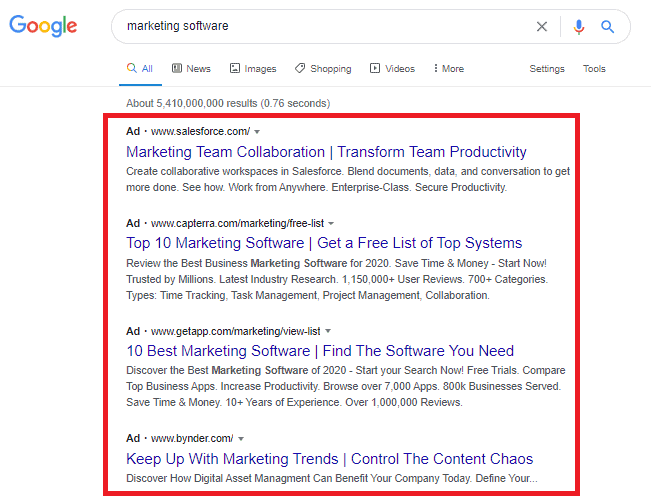
#3 Video Ads
Video ads are one of the most effective forms of advertising as they capture the audience's attention. They are visually stimulating, generally featuring both moving images and audio. Some key characteristics of video ads include:
Characteristics
- Engaging visuals: Video ads combine sound and visuals to tell a compelling story, creating a solid emotional engagement that compels viewers to take the desired action.
- Highly targeted: With digital platforms, you can show video ads to particular demographics, allowing for personalized messaging and improved conversion rates.
- Versatility: Video ads can take many forms - short or long, animated or filmed, humorous or serious. Thus, they allow for creative expression and innovation.
Benefits
- Better retention rates: There is a high chance of remembering your message if it is presented in a video format
- Improved SEO: Videos can enhance your SEO efforts, as search engines prioritize media-rich content.
- Increased social sharing: Videos are shared more on social media than any other form of content, thus expanding your reach.
- Higher conversion rates: Highly engaging video ads often lead to higher conversion rates than other advertising forms.
Tips
- Know your audience: Understanding what resonates with the content that speaks to your audience is the best way to reach them.
- Tell a story: Storytelling can capture your audience's attention and make your ads more memorable.
- Feature a call-to-action: Always include a clear and concise call-to-action to guide viewers on the next steps.
- Test different formats: Experiment with other formats and styles to find the best for your target audience.
Example
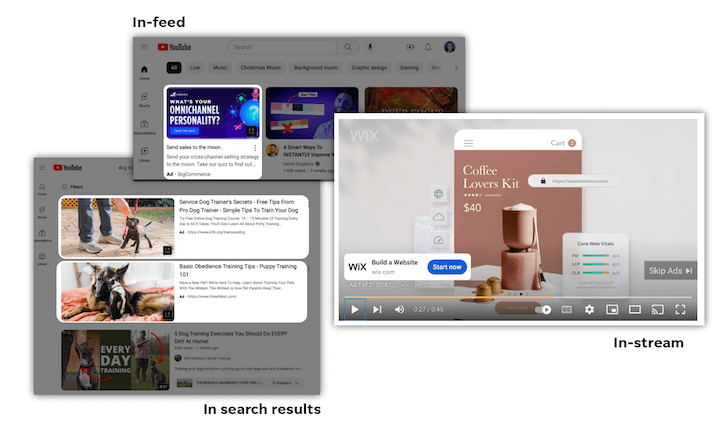
#4 Email Advertising
Let's shift our focus towards email advertising, an effective online marketing tactic. Email advertising has retained charm despite evolving technologies and changing controlled behavior.
Characteristics
- Personalization: Email advertising allows you to tailor content according to the preferences and needs of each user. With segmentation and personalization tools at hand, creating content is now feasible.
- Measurability: Email advertising offers the benefit of measuring its effectiveness. You can track metrics: click-through rates, open rates, and links.
- Cost-effectiveness: Unlike advertising methods that require a budget, email advertising is affordable, making it a practical choice for businesses of all sizes.
Benefits
- Targeted Audience: Email advertising enables you to reach an audience anytime, fostering relationships with potential customers, leads, and existing clients.
- Increased Brand Recognition: Each email exposes consumers to your business and brand, building familiarity and fostering loyalty.
- Immediate Impact: Email advertising encourages prompt action. Whether receiving a response, signing up for a webinar, purchasing, or visiting your website, tracking and measuring user interaction allows for modifications based on their engagement.
Tips
- Create Engaging Subject Lines: Capture your audience's attention with captivating lines. This initial impression plays a role in convincing them to open your email.
- Deliver Value: Ensure that the content of your emails provides recipients with exclusive offers, helpful advice, or insightful news—to make it worthwhile for them.
- Mobile Friendly: Optimize your emails to be mobile friendly so they can be easily viewed and interacted with on devices.
Example
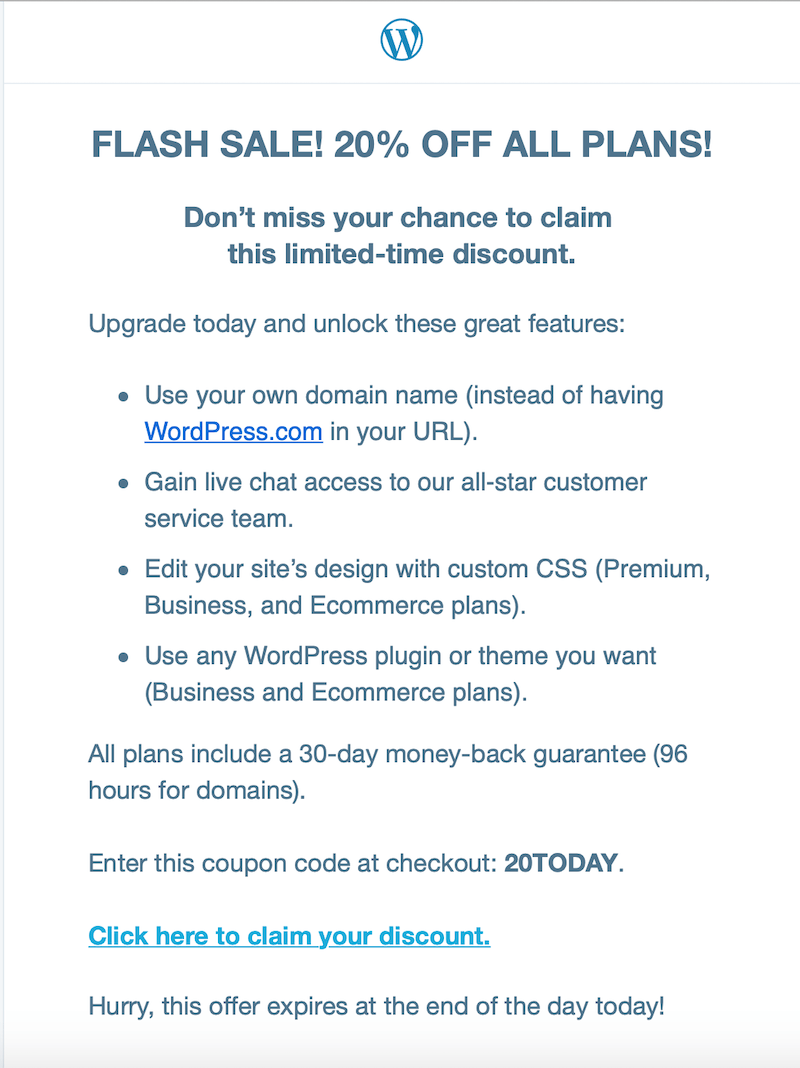
#5 Social Media Advertising
Social media advertising is an effective tool businesses of all-sizes can use to connect with their customers. It offers features, multiple advantages, and strategic tips to help you achieve your business goals.
Characteristics
- Targeting: Unlike other forms of advertising, social media advertising allows us to target our desired audience precisely based on age, gender, and location.
- Cost-effectiveness: It offers an affordable option compared to traditional advertising methods. You control how much you wish to invest in your ad campaigns.
- Interactivity: Social media allows for real-time communication with users. You can get user feedback on your content through comments, likes, and shares.
Benefits
- Brand Awareness: It enhances your brand's visibility and expands its reach among customers.
- Increase Traffic: By leveraging social media channels to share your content, you can significantly boost the traffic directed towards your website.
- Improved Search Engine Rankings: Social signals, like shares and likes, have the potential to impact your search engine ranking positively.
Tips
- Maintain branding: Make sure your social media profiles and posts align with the image you want to project for your brand.
- Engage with your audience: Responding to comments and messages from your audience helps build a strong relationship with them.
- Quality over quantity: Rather than posting a large volume of content, prioritize creating informative and engaging posts.
- Monitor and modify: Keep an eye on the performance of your ads and make necessary modifications to ensure they effectively reach the intended audience.
Example

#6 Native advertising
Native advertising has become increasingly popular for businesses to reach their audience subtly and engagingly. Unlike traditional advertising, which can be disruptive and conspicuous, native advertising blends in with its environment, offering a less intrusive experience for consumers.
Characteristics
- Seamless Integration: Native advertising can be integrated seamlessly into the platform it appears on, and its form and function can be matched.
- Focus on Value: Content provided through native ads tends to be helpful and adds value to the consumer's experience rather than merely promoting a product.
- Target Audience Relevance: The ads are tailored to align with the interests and behaviors of the target audience of the platform on which they appear.
Benefits
- Increased Engagement: Since native ads do not disrupt the user's experience, they see higher engagement rates than conventional ads.
- Better Conversion Rates: Native ads, by being more relevant and less intrusive, can lead to better conversion rates.
- Improved Brand Perception: Subtler advertising reduces resistance from the audience, thereby enhancing brand perception and trust.
Tips
- Know Your Audience: Create effective content by understanding your audience's online behavior, needs, and interests.
- Choose the Right Platform: Select platforms where your target audience is active and your ad can blend seamlessly with the content.
- Create Compelling Content: Ensure your content is engaging, informative, and quality. It should be able to captivate the audience on its own.
- Analyze and Improve: Consistently analyze the effectiveness of your advertisements. Refine your approach to achieve superior outcomes.
Example
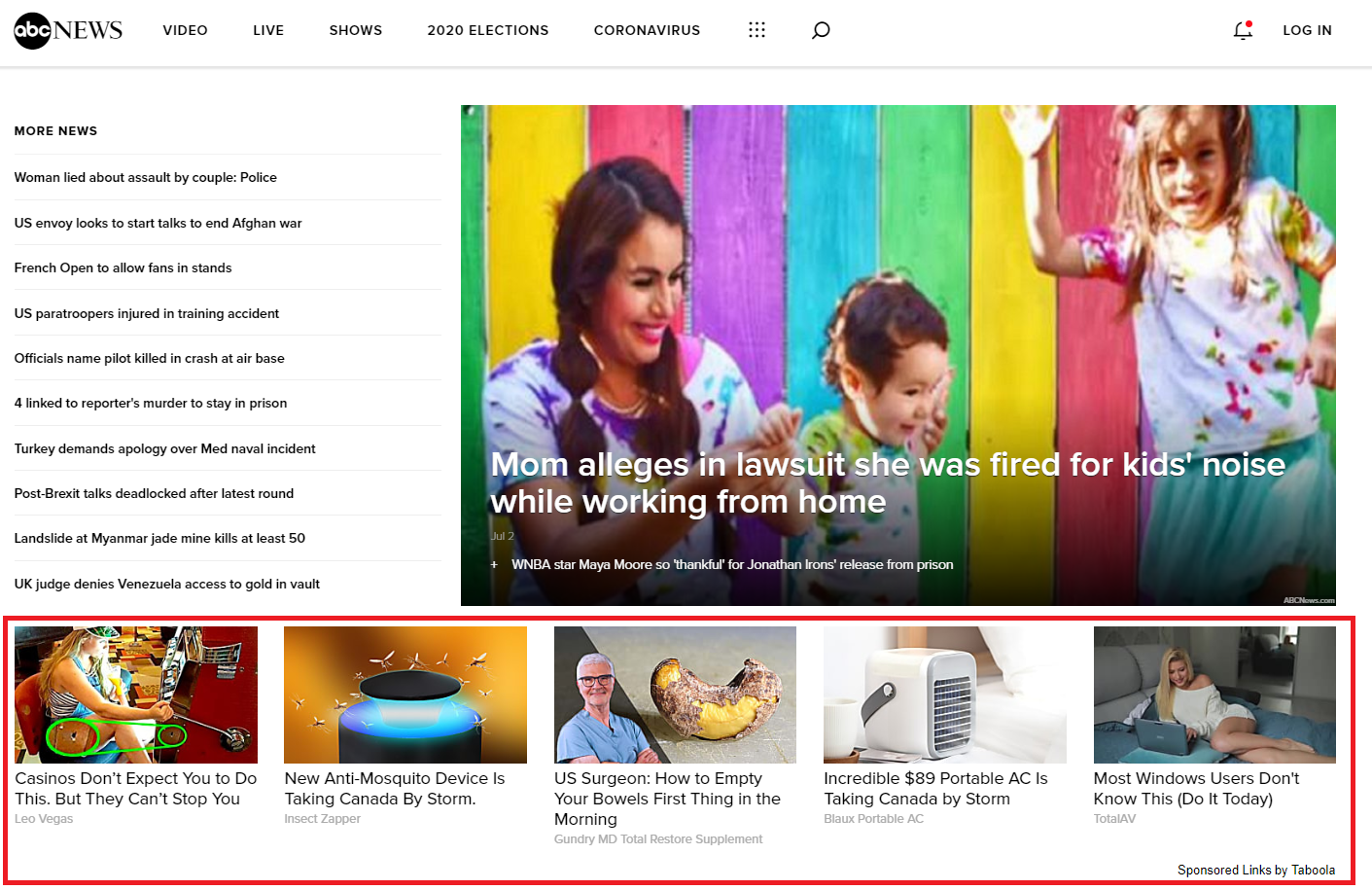
#7 Audio Advertising
Audio advertising is a form that targets specific audiences through various audio platforms like radio, podcasts, and digital streaming services.
Characteristics
- Personal Connection: Audio advertising establishes an intimate atmosphere with the listener, enabling brands to build emotional connections.
- Adaptability: Audio advertisements can be modified or tailored to target audiences of specific programs or stations.
- Flexibility: Audio advertising is flexible regarding time frame, length, and content. Ads can range from quick, short bursts to detailed, longer formats depending on the message and platform used.
- Visibility: Despite being audio-based, these advertisements have high visibility due to their ability to reach a broad audience at any time, given the ubiquity of audio devices.
Benefits
- Increased Reach: With the broad bandwidth of audio platforms available today, businesses can reach a more extensive and diverse demographic.
- Cost-Effective: The production and distribution costs of audio advertisements are lower than those of visual mediums such as TV or print.
- Engagement: Audio stimulates the imagination, making the user more engaged and apt to retain the message.
- High Retention Rate: Research suggests listeners are likelier to remember audio adverts than other mediums.
Tips
- Understand Your Audience: Understanding the characteristics of your target audience is crucial for successful audio advertising.
- Craft a Clear and Concise Message: Make sure your message is concise and easily comprehended. Listeners should know what you're offering by listening to your ad.
- Utilize Professional Voice-Over: A professional voice-over can effectively convey your message, capturing listeners' attention.
- Include a Compelling Call to Action: To optimize ad performance, include a compelling call to action that encourages your audience to take action.
- Test Effectiveness: Testing its effectiveness on a smaller scale is advisable before launching an audio advertising campaign. This allows for measurement and necessary adjustments to be made.
Example
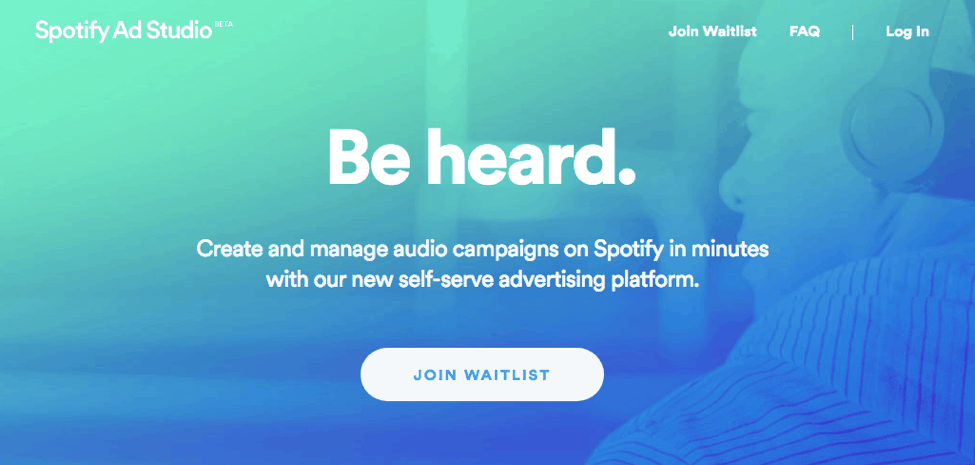
#8 Mobile advertising
Mobile advertising has been a growing part of the marketing landscape over the past few years due to the proliferation of smartphones and the increased popularity of mobile internet.
Characteristics
- Location-Based targeting: Since smartphones are portable, advertisers can customize their messages based on the user's location, ensuring relevant and personalized content.
- Engaging Multimedia Content: Mobile ads often incorporate appealing elements like videos, slide shows, and interactive features that encourage user participation.
- Personalization: Mobile devices give advertisers insights into users' interests, preferences, and buying history. This enables the creation of relevant and personalized ads that resonate with the target audience.
- Integration With Social Media: Mobile ads can be more effective when integrated with social networks, as many mobile users spend a lot of time on these platforms.
Benefits
- Extensive Reach: With billions of mobile devices being used globally, mobile advertising offers access to a massive audience, enabling your brand to gain greater visibility.
- Higher User Engagement: Mobile ads tend to have engagement rates compared to desktop ads partly because they offer immersive and interactive formats.
- Improved Conversion Rates: Mobile advertising is a great way to increase conversions since it targets ads that are likely more effective and motivate users to act.
- Cost-effectiveness: Mobile ads often come with costs per click or cost per impression compared to traditional online ad formats, making them an affordable marketing option for businesses of all sizes.
Tips
- Understand your target audience: Know your market by demographics, interests, and preferences. Create ads tailored to your target market's needs.
- Optimize for mobile devices: Ensure your ads are designed and perform well on various devices and screen sizes. This will provide a user experience.
- Prioritize location-based targeting: Utilize the location data devices to create targeted campaigns catering to users in specific geographic areas.
- Test and analyze: To find the most effective combination for your business, you must experiment with ad formats, targeting options, and creative elements. Keep an eye on your campaign performance and make data-driven decisions to maximize your return on investment.
- Stay updated about industry trends: Mobile advertising is constantly evolving. It's essential to keep up with trends and changes to adapt your strategy and remain competitive.
Example
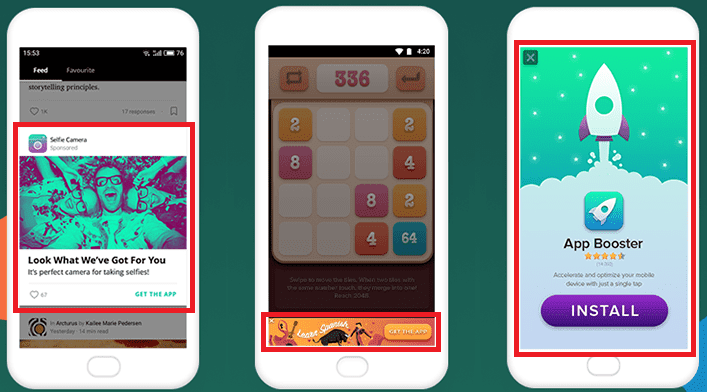
#9 Retargeting Advertising
Retargeting allows businesses to reach users who have previously interacted with their mobile app or website. This technique uses similar technologies or cookies to track users across the web and display advertisements even after they've left the original site.
Characteristics
- Specificity: Retargeting campaigns are exact as they target users who have already demonstrated interest in a product or service.
- Customization: Advertisers can create tailored ads that reflect a user's actions, increasing the chances of conversion.
- Efficiency: Retargeting stands out for its cost-effectiveness and higher conversion rates than advertising.
- Versatility: Retargeting can be effectively implemented across social media, mobile apps, and web browsers.
Benefits
- Increased Conversion Rates: Users exposed to retargeting ads are likely to convert due to their familiarity with the brand.
- Brand Recall: Through retargeting, brands remain at the forefront of users' minds, potentially fostering brand loyalty.
- Better ROI: The targeted nature of retargeting often yields a return on investment compared to other advertising strategies.
- Audience Insights: Retargeting provides insights into user behavior that can be utilized to optimize future marketing campaigns.
Tips
- Segment Your Audience: Segmenting audiences based on their interests and behavior will help you improve your retargeting efforts.
- Control Ad Frequency: Set a limit on the number of times an ad appears to prevent annoying users.
- Adaptative Creatives: Utilize ads that automatically adjust their content to match the user's previous interactions.
- Conduct A/B Testing: Experiment with ad elements, such as wording or design, to determine the most effective approach for your target audience.
- Monitor Performance: Regularly analyze analytics to adjust campaigns and enhance efficiency.
- Ensure Privacy Compliance: Stay informed about privacy laws and regulations to maintain user trust.
Example
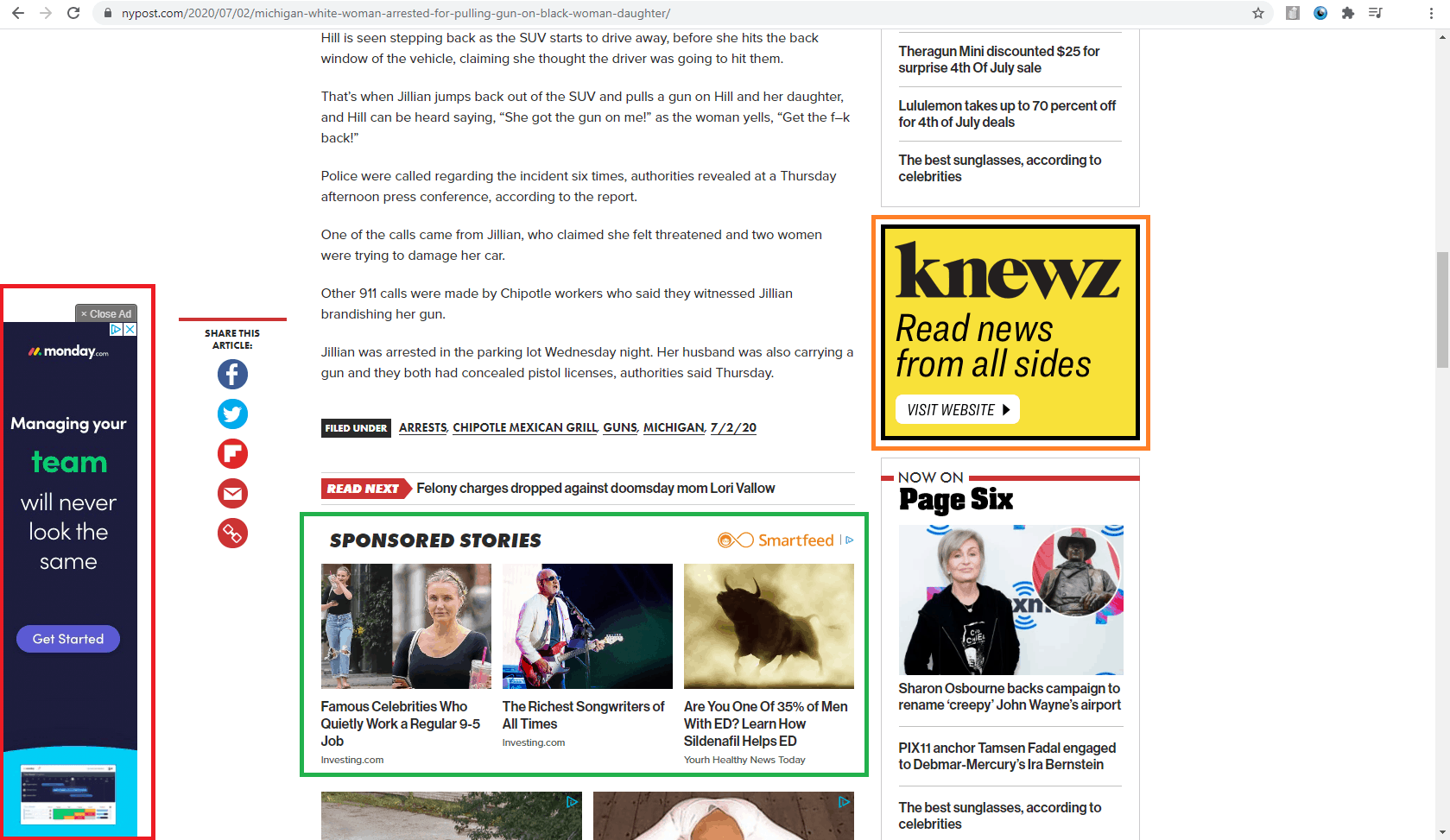
#10 Influencer Advertising
In the years, influencer advertising has become a popular and effective strategy in the marketing world. This unique approach involves leveraging social media personalities to promote brands, increasing brand awareness and customer engagement.
Characteristics
- Utilizing Social Media Personalities: This form of advertising heavily relies on individuals with a following on social media platforms, known as "influencers." Their opinions have the power to influence the purchasing decisions of their followers.
- Enhanced Authenticity: Collaborating with influencers often leads to campaigns that feel more genuine and relatable to consumers than traditional publishing methods.
- Targeted Audience: Influencers typically have a group of followers, allowing brands to target their desired audience precisely.
Benefits
- Increased Brand Awareness: When influencers share content related to a brand, it boosts visibility and public awareness.
- Customer Relationships: Influencers often have a trusted connection with their followers, which enables them to bridge the gap between the brand and the potential customers.
- Boosted Sales: By finding the balance between an influencer and their audience, brands can expect a significant increase in sales.
Tips
- Choose the Right Influencer: Brands should thoroughly research influencers to ensure they align with the brand's image and mission.
- Clearly Define Your Goals: Clearly outlining campaign objectives from the beginning helps influencers understand what you want to achieve, increasing the effectiveness of their targeted content.
- Trust Your Influencer: Once you've selected an influencer, it's crucial to have confidence in their content delivery style. They understand their audience and know how to captivate them effectively.
Example
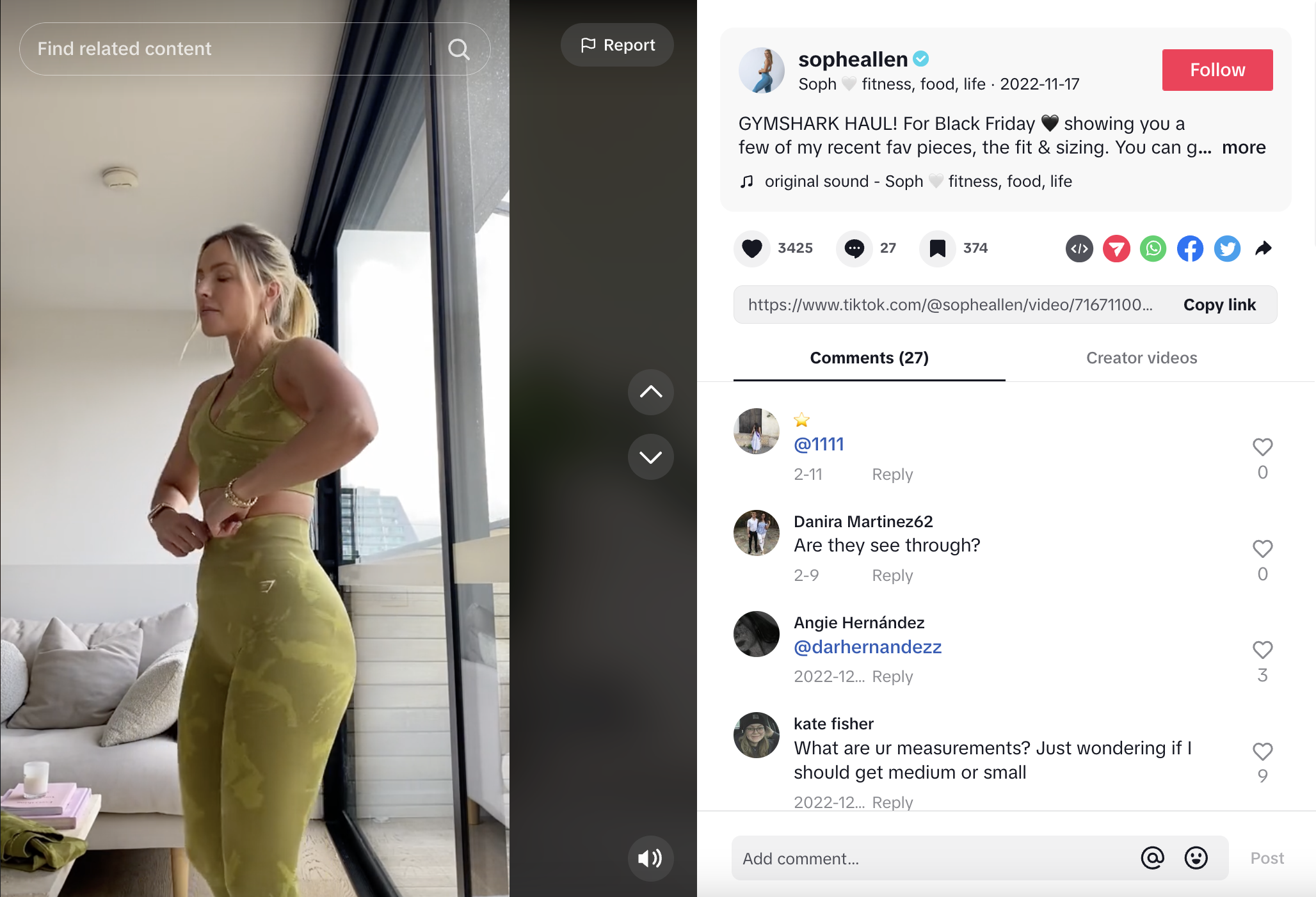
Understanding the Mechanism of Different Types of Digital Advertising
Digital ads are a marketing approach that relies on data to connect with consumers at various stages of the purchasing journey. It involves placing promotional materials and messages in front of individuals who have already shown interest.
Key Components of Different Types of Digital Advertising
- Advertising Platforms: These services use algorithms to decide which ads to display to users. Google Ads Manager, Facebook Ads Manager, and others are examples.
- Targeted Advertising: This strategy utilizes user behavior data to ensure that ads are shown to those likely to make a purchase.
- Data Collection: Information about a user's habits, preferences, and demographics. They are utilized for creating personalized profiles. These profiles are then used to determine the effective ads for each individual.
- Cost Models: Most ads operate on a cost-per-click (CPC) or cost-per-thousand-impressions (CPM) basis.
 Pricing Models for Different Types of Digital Advertising
Pricing Models for Different Types of Digital Advertising
- PPC (Pay Per Click)
- CPM (Cost per Mile)
- CPA (Cost per Acquisition)
- CPV (Cost per View)
- CPI (Cost per Install)
The advertising world has experienced significant growth over the past few years, leading to the development of various pricing models. Each pricing model has advantages and disadvantages, enabling advertisers to select the one that best aligns with their needs. Understanding your goals and objectives is crucial when deciding on a digital advertising pricing model. Business can maximize their advertising budget and achieve exceptional results by choosing this model.
- Pay Per Click (PPC): Advertisers pay for each click on their ad. This strategy suits advertisers who aim to drive traffic and enhance user engagement.
- Cost per Mille (CPM): Advertisers pay for every thousand times their ad is displayed. This approach is ideal for those focusing on increasing brand awareness and visibility.
- Cost per Acquisition (CPA): Cost per Action or Cost per Conversion requires advertisers to pay when a specific action, such as a sale, sign-up, or the user completes a download. It suits advertisers with marketing objectives in mind.
- Cost per View (CPV): Cost per view becomes particularly relevant. Advertisers pay when users view their video ads. This strategy encourages them to create engaging and compelling video content.
- Cost per Install (CPI): Cost per install applies to app advertising. With this approach, advertisers pay when a user installs the app. It proves beneficial for those focusing on app promotion and increasing downloads.
 How to Choose the Right Digital Advertising Strategy
How to Choose the Right Digital Advertising Strategy
- Understanding Your Target Audience
- Set Clear Goals
- Consider Your Budget
- Exploring Different Advertising Platforms
- Analyzing Competitor Strategies
- Selecting Suitable Ad Formats
- Customize Your Message
- Test and Improve
When selecting the digital advertising strategy for your business, it's crucial to consider your marketing goals carefully. To make a decision, follow these steps:
#1 Understanding Your Target Audience
Determine the characteristics of your intended audience, including age, gender, location, and income.
Consider their interests, preferences, and online behavior patterns when crafting your digital ads strategy.
#2 Set Clear Goals
Define the goals you want to achieve with your advertising. This could be increasing brand awareness, visibility, and generating leads. It could also include driving sales and conversions or improving customer loyalty.
#3 Consider Your Budget
Assess how much you are willing to invest in your advertising campaign.
Your budget determines the platforms and strategies you can utilize effectively.
#4 Exploring Different Advertising Platforms
Research advertising platforms available to reach your target audience effectively.
Consider options such as search engine advertising (e.g., Google Ads, Bing Ads), social media advertising (e.g., Facebook, Instagram, LinkedIn, Twitter, TikTok), display advertising networks (e.g., Google Display Network), as well as video advertising opportunities (e.g., YouTube).
#5 Analyzing Competitor Strategies
Study your competitor's digital ad strategies to identify any gaps or potential opportunities for improvement in your campaigns.
#6 Selecting Suitable Ad Formats
Choose ad formats that resonate with your target audience while aligning with your goals.
Options may include text ads for search engine marketing purposes, image and banner ads for display campaigns, video ads for video-focused platforms, and carousel or sponsored content ads within social media advertising.
#7 Customize Your Message
Create captivating advertisement content that addresses your target audience's needs, interests, and challenges.
#8 Test and Improve
Consistently monitor and refine your advertising strategy based on performance data. Make adjustments to maximize return on investment and achieve your desired outcomes.
Digital Advertising Trends and Future Outlook
The future of advertising holds great promise, with several exciting trends on the horizon;
- Artificial Intelligence: AI can enhance advertising targeting by analyzing the user's behavior and preferences. This will result in more relevant and compelling advertisements.
- Voice Search Advertising: With the rising popularity of voice assistants, voice search advertising can potentially revolutionize the industry.
- Augmented Reality (AR) & Virtual Reality (VR) Ads: These technologies offer ad experiences that can boost engagement and conversion rates.
The realm of digital ads is constantly evolving and expanding. Businesses must stay informed about these trends and continuously innovate to capitalize on technology opportunities while remaining relevant to their target audience.
That's a wrap for Different Types of Digital Advertising...
Well, we have reached the end of this exhilarating journey through advertising. Phew!
Who would have thought that keywords and captivating copy could leave us feeling dizzy? So, what have we discovered? In this age of digitalization, the key is to adapt and excel, whether enticing search engine users with PPC ads or crafting content that appeals to social media enthusiasts! Can we take a moment to acknowledge how our phones have become personal advertising billboards?
As for the future. Well, it shines brighter than a Black Friday sale! The world of advertising will continue evolving without a doubt. Navigation might become more challenging. Fear not, because that's where bravery (and blogs like ours) come into play! To infinity and beyond advertisers! Remember, diversity isn't the spice of life; it's also the secret ingredient in digital ads! With that said, we drop the mic!
Frequently Asked Questions
How can I advertise my business on the internet?
To promote your business on the internet, you'll need to take an approach. Having a designed website is crucial, and optimizing it for search engines is vital so potential customers can easily find you.
Social media platforms and their advertising features will allow you to run targeted campaigns.
Additionally, email marketing is a way to connect with your current or prospective customers directly.
List your business on directories or marketplaces to boost your online presence. By combining these strategies, you'll increase the visibility of your business on the internet.
What are the different types of digital advertising?
Digital advertising encompasses methods marketers use to connect with their target audience online. These methods include:
- Display Ads
- Paid Search Advertising
- Video Ads
- Email Advertising
- Social Media Advertising
- Native Advertising
- Audio Advertising
- Mobile Advertising
- Retargeting Advertising
- Influencer Advertising
Each type offers approaches and provides businesses with diverse options for promoting products or services.
How to do digital advertising?
To effectively implement advertising, start by setting clear goals. Be precise in identifying your target audience. Use social media, search engines, websites, and email platforms. Craft content while also focusing on optimizing search engines to enhance visibility. Explore strategies, track your progress, and adapt your approach based on feedback received.
What is the most potent form of advertising?
Word of mouth is often considered a powerful form of advertising. It involves recommendations from friends, family, and acquaintances who share their experiences with a product or service. When trust is established between people, these endorsements have a more significant impact. Social media platforms have amplified this effect by allowing customers to share their experiences with an audience.
Which social media advertising is best?
The success of social media advertising relies on who you're trying to reach and what you want to achieve. If you have oriented products, platforms like Instagram and Pinterest would be perfect for showcasing them.
Linkedin is unparalleled when it comes to B2B marketing. Conversely, Facebook and Twitter provide extensive reach and specific targeting capabilities.
Sociallyin - Your Trusted Partner in Crafting Digital Advertising Strategies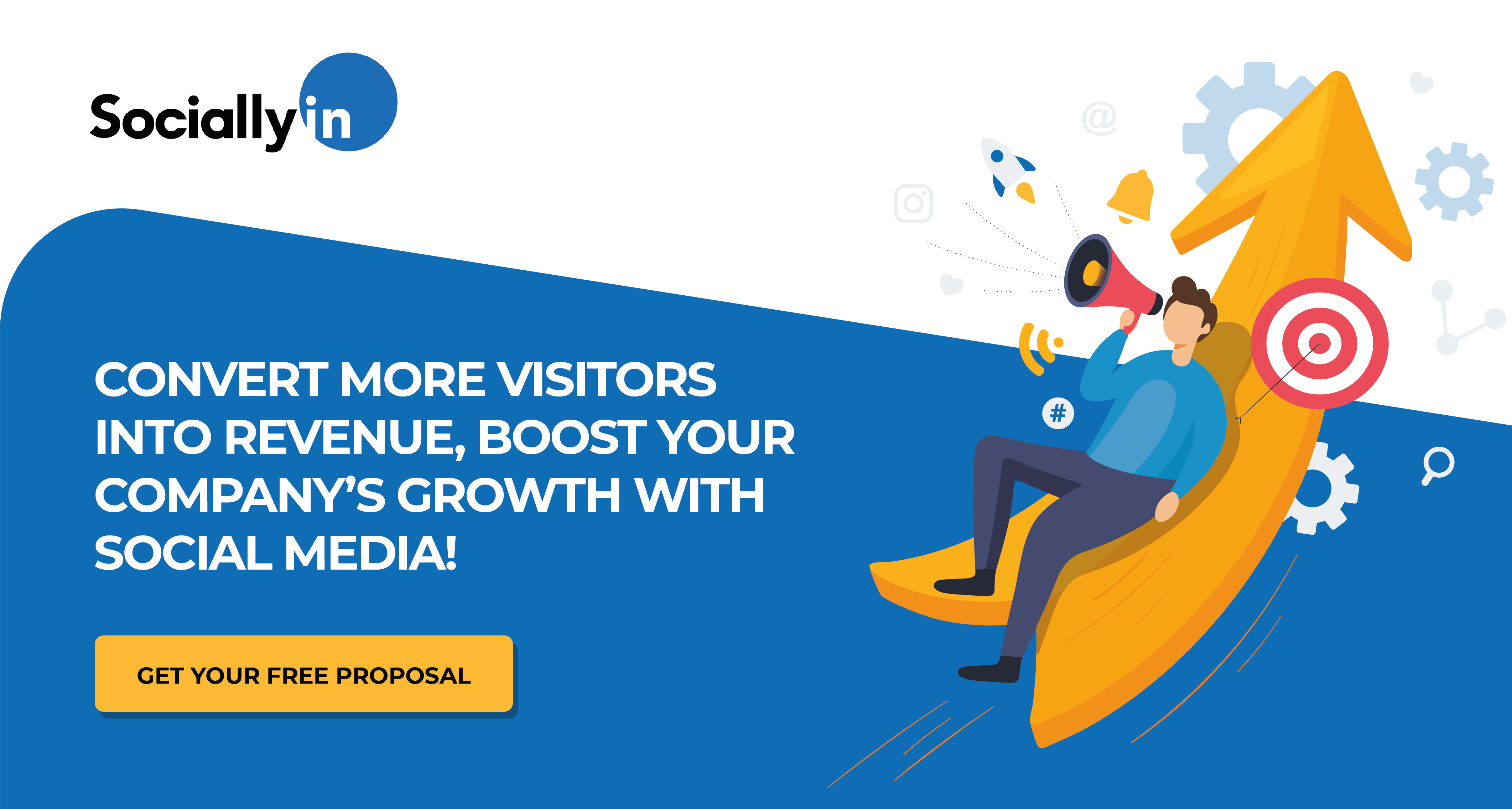
At Sociallyin, we bridge the gap between companies and their target audience by providing solutions to create impactful digital ad strategies.
Sociallyin's approach to developing a digital advertising strategy starts by understanding the unique characteristics of your company, including its goals, target audience, and strengths. They then conduct industry research and competitor analysis to create a custom advertising strategy that stands out in the competitive landscape.
Digital Marketing for Dentists: Effective Way To Grow Your Practice
The Importance of Digital Marketing
Digital Marketing Analytics 101: Best Way to Spice Up Campaigns
Guide to Hospitality Digital Marketing | The Powerful Strategies
Digital Marketing Strategy Examples: A Guide to Your BRAND Success



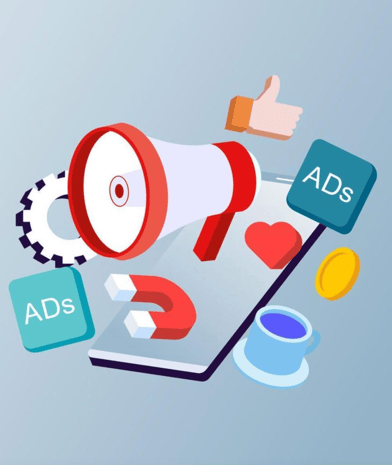



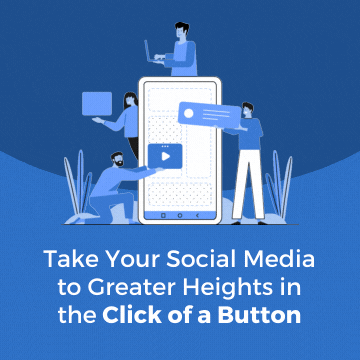






Your Comments :